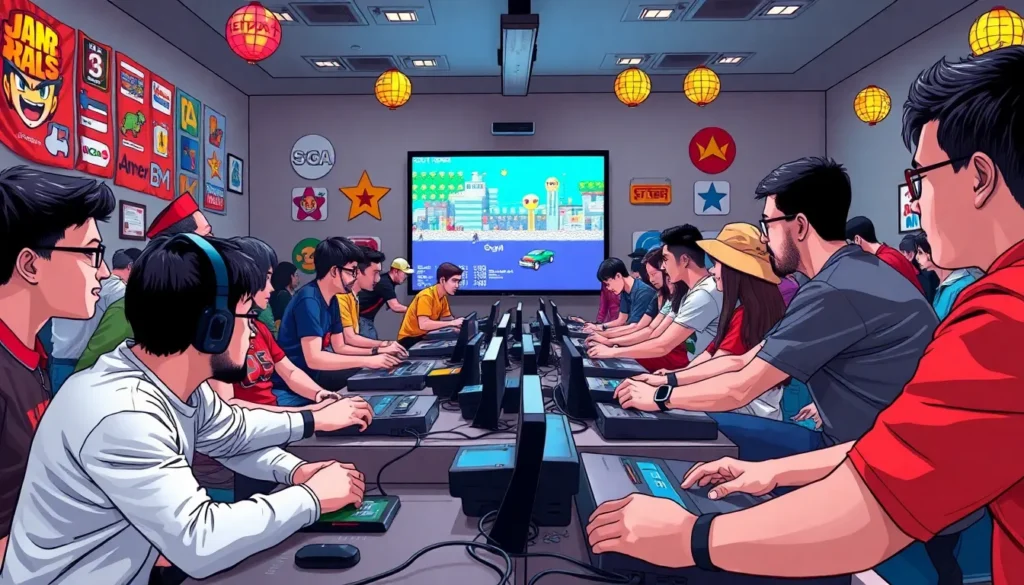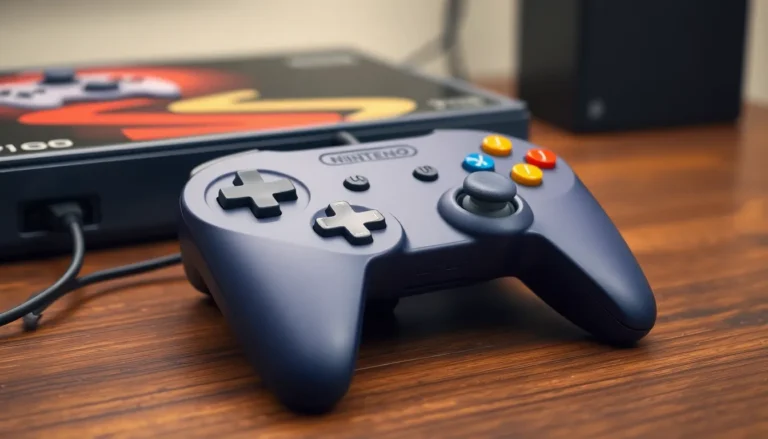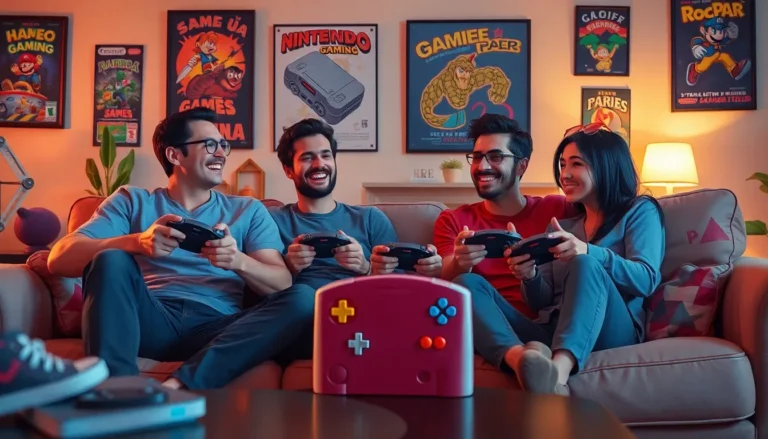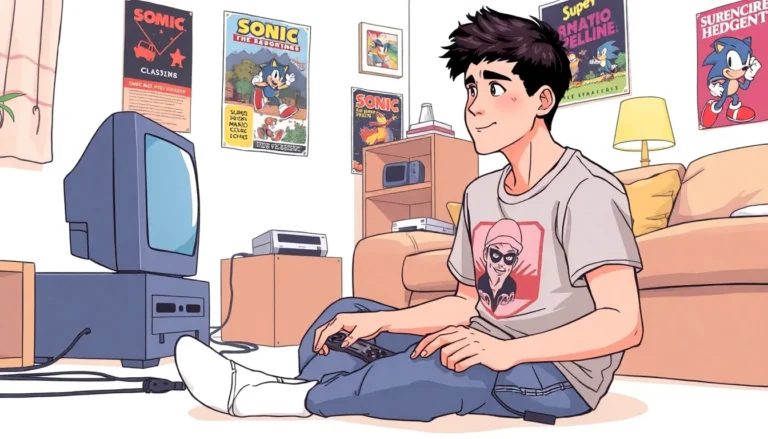In a world dominated by cutting-edge graphics and hyper-realistic gameplay, retro game tournaments are like a time machine that whisks players back to the golden age of gaming. Picture this: pixelated graphics, catchy 8-bit soundtracks, and the thrill of competing with friends over classic titles. It’s not just nostalgia; it’s a celebration of gaming history where legends are born and rivalries reignite.
Table of Contents
ToggleOverview of Retro Game Tournaments
Retro game tournaments attract enthusiasts who appreciate vintage gaming. These events showcase classic games from the 1970s to the 1990s, often featuring consoles like the Nintendo Entertainment System, Sega Genesis, and Atari 2600. Players compete in popular titles such as “Super Mario Bros,” “Street Fighter II,” and “Pac-Man.”
Participants typically experience the thrill of competition while reliving cherished memories. Skill levels vary, allowing both seasoned players and newcomers to join together. Organizers usually provide multiple formats for competition, including single-elimination and round-robin structures.
Many tournaments incorporate a lively atmosphere with colorful decorations, nostalgic music, and themed merchandise. Attendees often cosplay as favorite characters, contributing to the engaging environment. Sponsors may offer prizes ranging from retro consoles to collectible items, heightening competitive excitement.
With attendance numbers increasing, participants often travel across states or even countries for their chance to compete. Locations vary from local community centers to large gaming conventions. Popular events, such as the Classic Game Fest in Austin and the Retro World Expo in Connecticut, draw significant crowds annually.
Networking opportunities arise during these tournaments, allowing gamers to connect and share experiences. Communities often form around specific games or consoles, fostering friendships that extend beyond the events. Furthermore, online platforms enable sharing of insights and strategies, enhancing skill development and community engagement.
Retro game tournaments not only reignite nostalgia but also cultivate a vibrant culture around historical gaming. These events serve as a celebration of the past, ensuring classic games remain relevant in modern gaming discussions.
Popular Retro Games in Tournaments
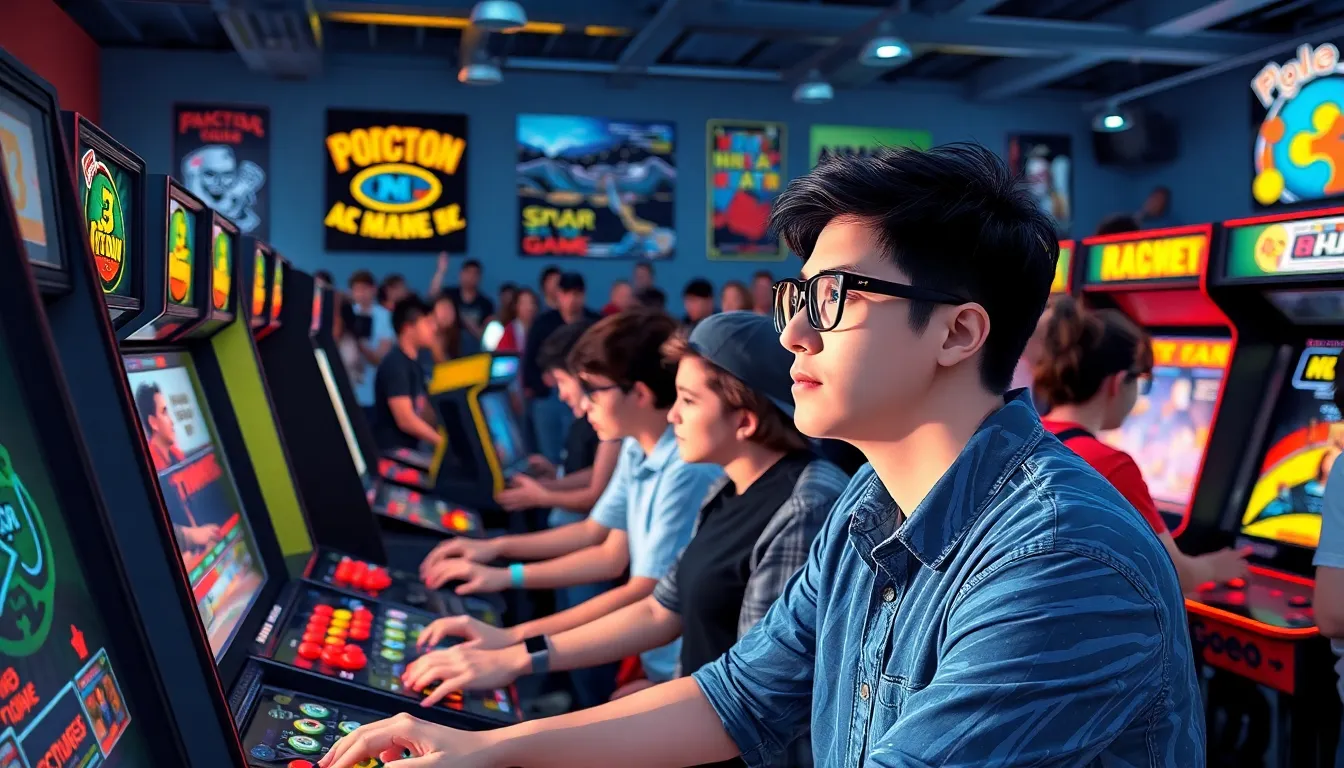
Retro game tournaments feature a fascinating selection of classic titles that attract many participants. These games span multiple consoles and genres, creating a rich gaming experience.
Classic Consoles
Nintendo Entertainment System and Sega Genesis stand out as iconic platforms in retro gaming. Players often compete in titles like “Super Mario Bros” and “Sonic the Hedgehog.” Competitions frequently highlight arcade-style games such as “Zelda” and “Metroid.” Players engage with these classics using original controllers, enhancing the nostalgic feel. Events encourage newcomers and veterans to showcase their skills, providing a fun and inclusive environment.
Arcade Masters
Established arcade games bring excitement to tournaments, drawing in both players and spectators. Titles like “Street Fighter II” and “Pac-Man” remain fan favorites, demonstrating their timeless appeal. In many tournaments, intense head-to-head competitions unfold, testing reaction times and strategic thinking. Players often share tips and techniques, fostering a sense of camaraderie. High-score challenges also add to the competitive spirit, inviting participants to push their limits. Enthusiastic crowds amplify the thrill, making these events unforgettable for all involved.
The Evolution of Retro Game Tournaments
Retro game tournaments have undergone significant changes over the years, evolving from small local gatherings to expansive global events.
From Local Events to Global Competitions
Local events became the foundation for retro gaming tournaments, bringing enthusiasts together to share their passion. Many players initially competed in community centers and arcades, fostering a sense of camaraderie. As interest grew, these gatherings expanded beyond their original locations. Major events now attract thousands of competitors and spectators alike. Global competitions feature participants from diverse backgrounds, showcasing not only skill but also cultural exchange within the gaming community. Players travel across states or internationally, drawn by the opportunity to compete for prized titles. Iconic tournaments like Classic Game Fest and Retro World Expo epitomize this shift, emphasizing the widespread appeal of retro games.
The Role of Online Platforms
Online platforms have transformed the landscape of retro game tournaments, enhancing engagement and skills development. Players connect through forums, streaming sites, and social media, sharing strategies and experiences. Competitive play often extends beyond physical tournaments, with online competitions becoming increasingly popular. Numerous websites host leaderboards, allowing players to track performance and compare their skills to others. Live streaming platforms enable participants to showcase their gameplay to global audiences. These digital spaces foster connections, creating communities centered around specific games or consoles. As a result, both new players and veterans find supportive environments to hone their skills while reliving the magic of classic games.
Key Elements of a Successful Tournament
Successful retro game tournaments hinge on several key elements. These factors create an enjoyable experience for both participants and spectators.
Game Selection Criteria
Game selection plays a crucial role in tournament success. Classic titles must resonate with players, enhancing nostalgia while challenging skills. A diverse lineup showcases beloved games across various genres and consoles, attracting different player demographics. Iconic games, such as “Super Mario Bros” and “Sonic the Hedgehog,” often take center stage. Additionally, considering the historical significance of titles can elevate participation. Including both well-known favorites and hidden gems ensures broad appeal. Involving the community allows for feedback on game choices, fostering excitement and engagement.
Tournament Format and Rules
Tournament format and rules shape the competition’s structure and fairness. Single-elimination brackets are common, offering quick resolutions for head-to-head matches. Round-robin formats can also be utilized, allowing for more games among participants. Setting clear rules for gameplay and conduct promotes fairness and integrity. Each tournament must outline specifics on scoring, time limits, and tie-breaking procedures. Flexibility in accommodating different skill levels ensures inclusivity, making participation accessible for everyone. Ultimately, well-defined formats encourage healthy competition while enhancing the overall tournament atmosphere.
Retro game tournaments embody the spirit of nostalgia while fostering a vibrant community. They unite players of all skill levels through shared experiences and cherished memories, creating a unique atmosphere filled with excitement and camaraderie. As these events continue to grow in popularity, they not only celebrate gaming history but also inspire new generations to appreciate classic titles. The blend of competition and community ensures that retro gaming remains a dynamic and engaging part of the broader gaming landscape. Whether through thrilling matches or the joy of connecting with fellow enthusiasts, these tournaments keep the legacy of vintage gaming alive and thriving.

